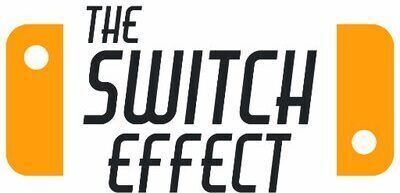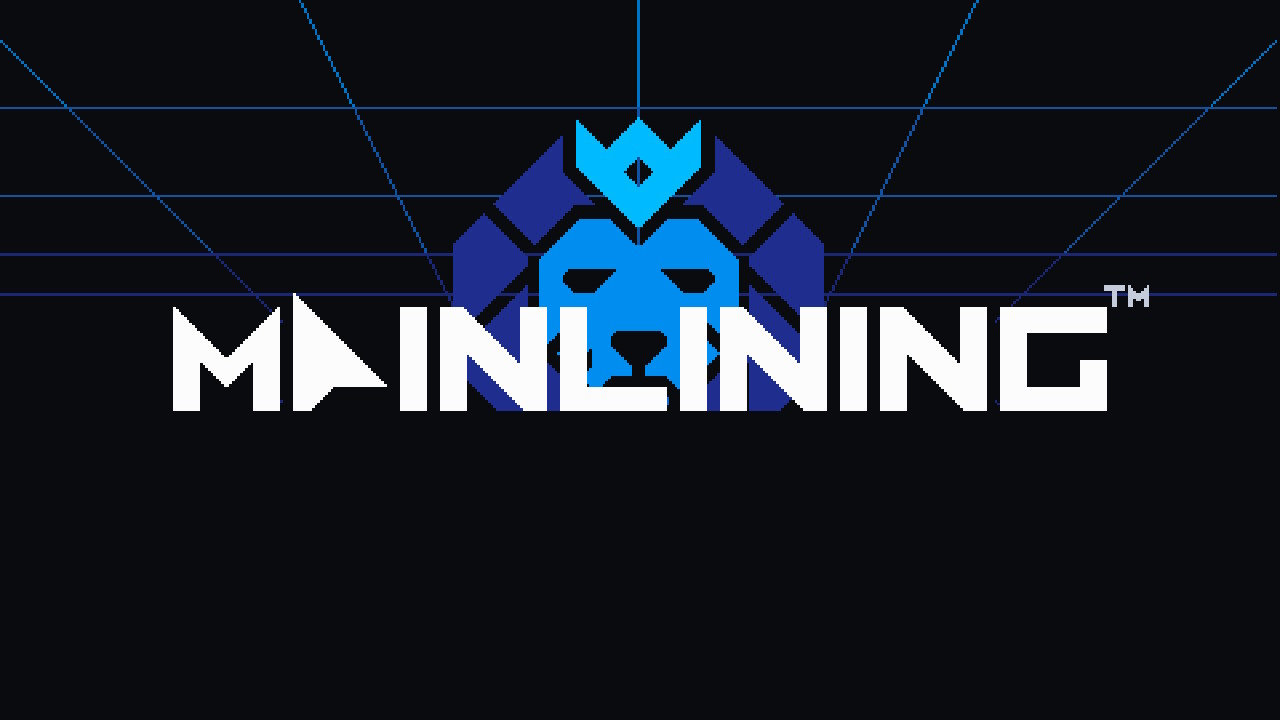Mainlining
Nintendo Switch
Developed By: Rebelephant
Published By: Merge Games
Category: Adventure, Simulation
Release Date: 06.20.19
Hacking in old movies always seemed so dang cool. Quick camera cuts of sexy young computer wizards typing furiously with their perfect hair and shouting stuff about mainframes and something something CPU just make the whole thing look so exciting. I suppose I’ve always known that movie hacking and real hacking are almost completely unrelated, but part of me still holds on to the old cliché ideas. With that in the back of my head, Mainlining for the Nintendo Switch is a game that held a great deal of promise. Catching cyber criminals in the act and sending them off to cyber jail or wherever sounds like exactly what I want out of a game about hacking. While it lacks the sexy computer wizards and perfect hair, the gameplay concept holds a lot of interesting ideas. Unfortunately, I don’t think the Switch is the right console for the experience.
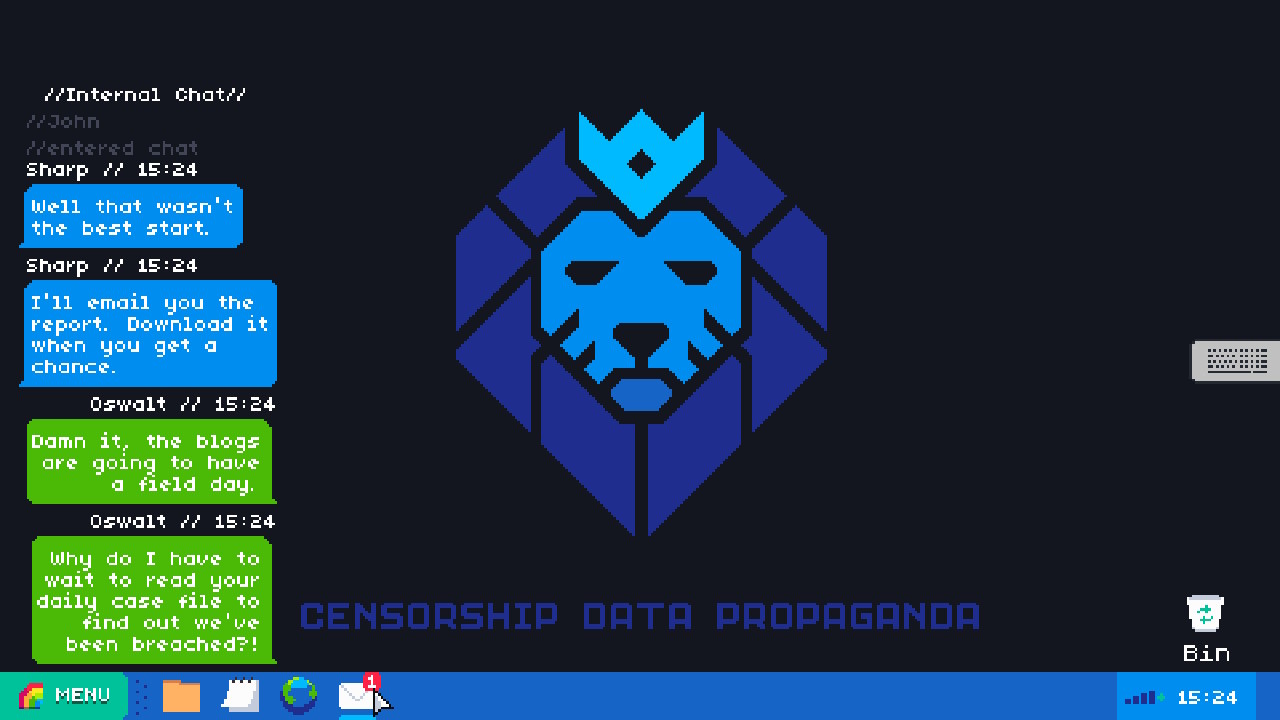
Blu Pill Action
Mainlining takes place in a fictional region of what I assume is Great Britain – or at least an area that has adopted the British national law enforcement agency nomenclature. Players take the role of an agent for MI7, the fictional (for now, but not always) branch of British military intelligence tasked with policing the internet and cybercrime under the auspices of the Blu Pill Act. Missions start out with your director sending an e-mail listing a possible criminal which you must then investigate to find their real name, location, and evidence of a crime they have committed. In terms of a storyline, the game doesn’t really pack much of a punch. Characters are shallowly defined, if at all, and there really isn’t a narrative arc to follow. It’s just kind of a series of cases; sure, the cases can lead into each other, but there aren’t any deep character arcs or satisfying emotional beats to draw you into the story. Like a lot of indie games, the story is more there to justify the gameplay elements, which admittedly has some pretty cool ideas.
Windows Rainbows OS
Mainlining runs on a very fascinating gameplay loop that basically simulates using Windows 95 back in the late 90’s or early 00’s. Yeah, it’s not that different than using Windows nowadays, really, except for the internet dial-up noises (yes, it makes the noises every time you have to connect. I didn’t think I missed them, but it turns out I did), but it still brought me back to the glory days of AIM and Internet Explorer being cutting edge technology. You use a browser to do some preliminary research on your targets, check your e-mail to download files from work, and an index of registered and suspected cybercriminals to identify your suspects. You also eventually get a cool GPS tracking software feature that you use to track criminals in real time.
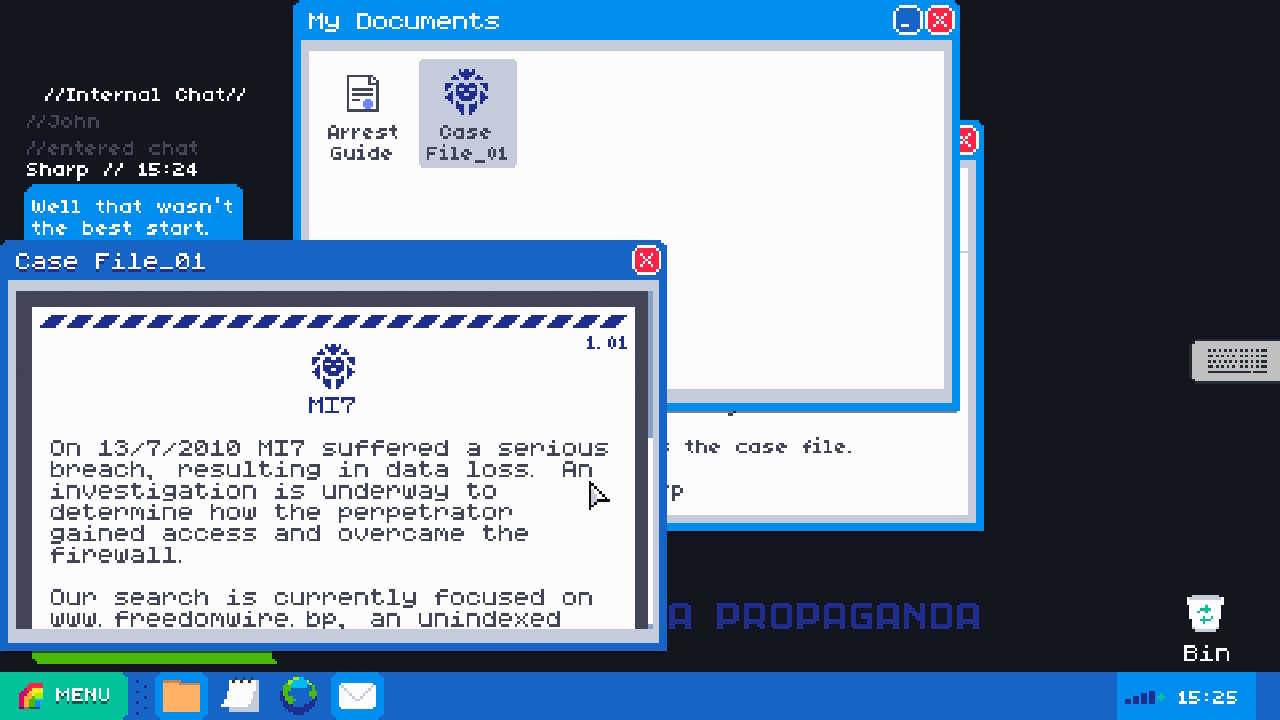
The Main Tool is the Mainline
The meat of the game comes through the Mainline software application, which allows you to gain access to information on websites you’re not supposed to see. You can use it to look up information about a website’s owners, give yourself access to download sensitive files, and track IP addresses. It works similarly to the command prompt in Windows, where you type a command and then the file you want to affect with said command. For instance, you can type “info” to get a list of commands, or “download [file]” to initiate a download. It’s a really cool mechanic, in theory, that paints a realistic picture of being a cybersecurity office drone. I found it really, really interesting, and it’s something I would have loved to explore – except for one glaring problem.
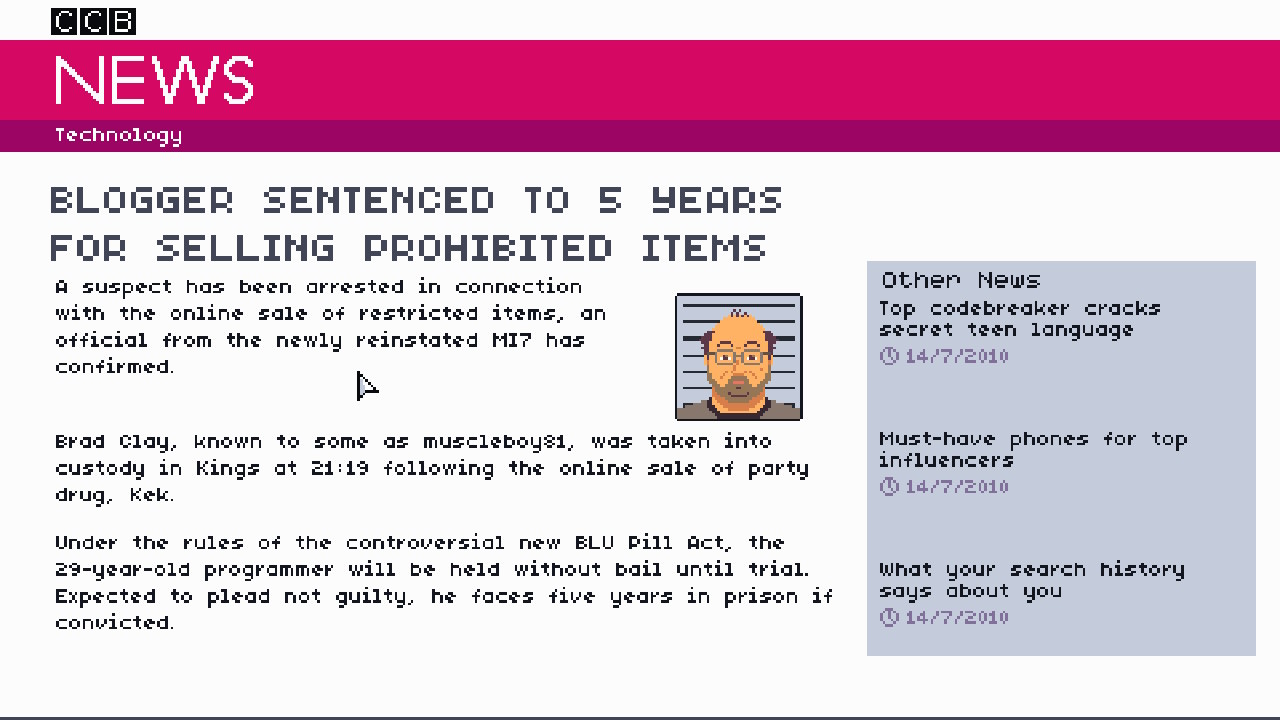
PC Inputs Only Work on PCs
Mainlining’s user interface works exactly the same way the UI on a PC with a mouse and keyboard works. The Switch does not have a mouse and keyboard peripheral, and therefore the controls do not translate well at all. Typing is awkward; the touch screen works best, but the Switch’s screen is too big to be like texting on a phone and using the controller is cumbersome and uncomfortable. You’ve got to use a hunt and peck technique to do the typing; I typed up this whole paragraph up to this point faster than I could type a 14-digit IP address into the Mainline. In fact, the touchscreen is better for ease of use overall; moving windows, typing, and pretty much everything runs smoother by using the swipe controls.
Unfortunately, the Switch’s screen gets cluttered very easily with all these windows popping up. When you add in the fact that the keyboard pops up as two separate windows that take up like a quarter of the screen, keeping control of your screen is way harder than it is on a PC. Taken altogether, the control scheme just makes playing Mainlining an excruciatingly slow, dull experience. I think everything would really work on a PC, but on a console that lacks a mouse and keyboard the game is almost unplayable.
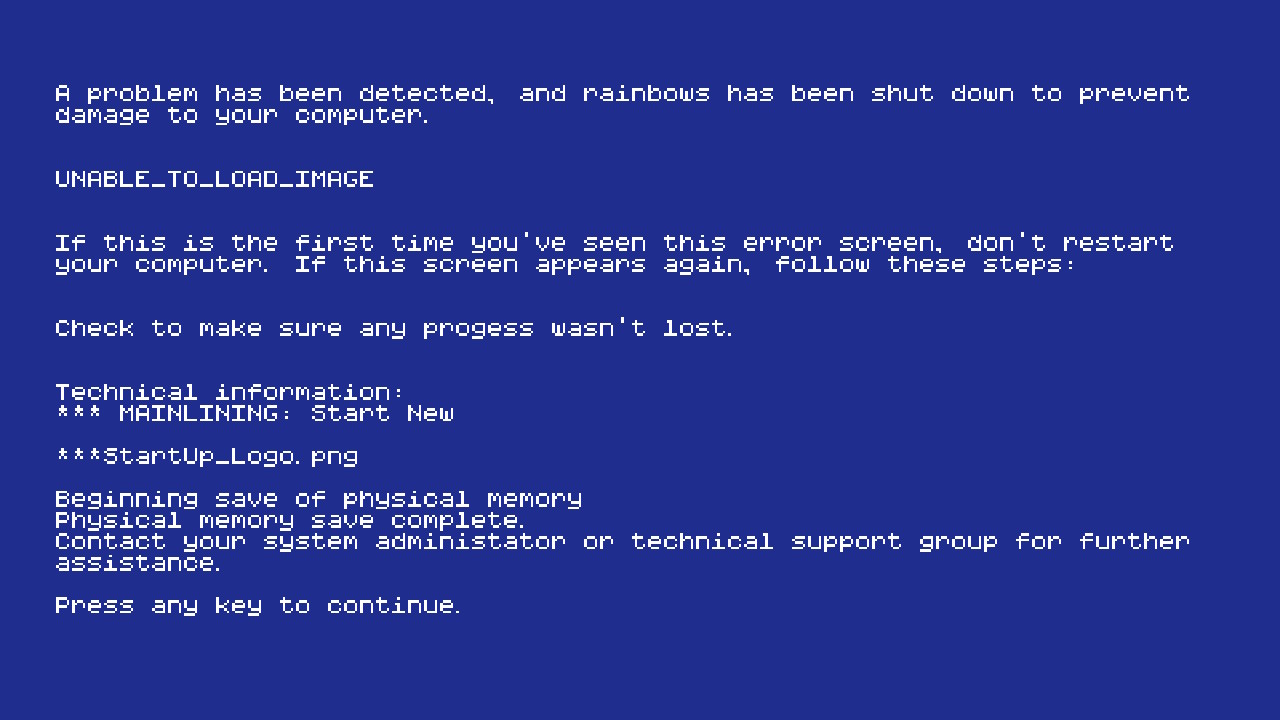
The Deep End
Another, albeit far smaller, issue with Mainlining, is the lack of a formal tutorial. The game prefers to let you explore its mechanics for yourself, which would normally be fine; I learn new software best by just playing around with it for a while, and this game is no different. It gives you the barest minimum of outlining your objective and maybe sending you a short text when a new feature opens up, but for the most part you have to figure out how to catch the bad guys using your own problem-solving and computer literacy acumen. The only reason this was a problem for me was, again, the poor control scheme. Spending the time to explore all of the game’s features became an absolute chore; so much so that when it came time to stop learning and play, I had lost most of my interest in doing so.
CRT Resolution, LCD Display
Mainlining crams Windows 98 functionality into a Windows NT aesthetic. The graphics are all pixel-based, sort of like a 16-bit graphics Windows. The visuals recreate an accurate, low-resolution version of the iconic OS’s desktop display, just in the widescreen format. It doesn’t make for a visually rich game, but it does create the feeling that you’re sitting at a PC tooling around the internet looking for dirt on people, which is essentially what you’re doing. It even recreates the sounds of the PC experience; dings for new e-mail or text messages, mouse clicks, and the internet dial-up noise are all faithfully rendered. The music is quiet and reserved, which fits the atmosphere of the game, but it doesn’t quite create anything especially memorable. All-in-all, Mainlining accomplishes its goal of recreating an office desktop PC environment.
TL;DR: There’s a fascinating idea at the core of the gameplay, but control input issues completely derail the experience on the Switch.





Buy Mainlining
$14.99
Follow Rebelephant
Follow Merge Games

[Review] Hello Kitty and Friends Happiness Parade – Nintendo Switch

Developed By: Dabadu Published By: Rogue Games Categories: Rhythm Release…
